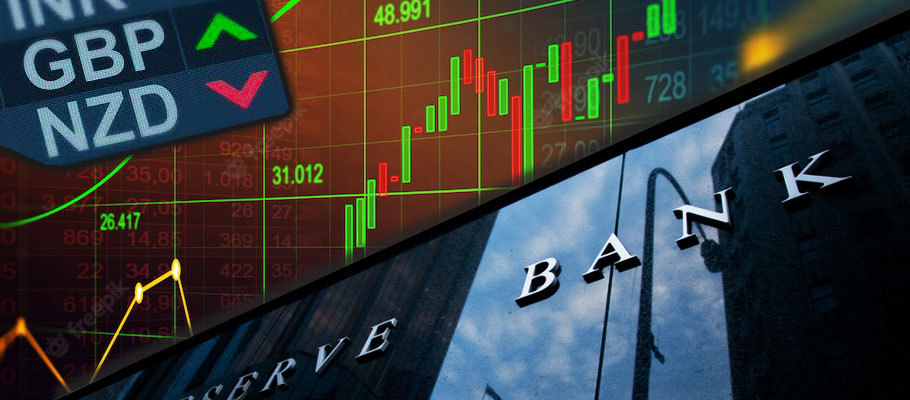
Published: October 5th, 2022
Sterling was on the up against NZD at the start of this week’s session. However, it appears central bank action will determine whether or not those gains can be sustained. There is potential for more upside, though the seeds of a reversal could be sown in this week’s meeting of the Reserve Bank of New Zealand (RBNZ).
Markets are looking for New Zealand’s central bankers to raise rates by a further 50 basis points, but analysts believe Aukland is nearing the end of its rate hike cycle.
Forex traders are watching closely for signals. That might go some way to explaining the Kiwi’s recent underperformance against fiats run by central banks with more scope to keep hikes coming over the next few months.
Count the Pound at the top of that list. GBP/NZD rose by 5.5 per cent last week (wc 26 October), pushing the pair to its highest level since March at 1.9965.
The timing of those gains came after the UK's mini budget and the economic and financial fallout it caused. That suggests a degree of broader New Zealand Dollar underperformance.
GBP rallied against NZD and other G10 majors on Tuesday when newly-minted Chancellor Kwasi Kwarteng went against prevailing wisdom and announced the abolition of the UK’s 45p income tax threshold.
Analysts said markets were unimpressed by the government's past performance in implementing 'surprise' tax cuts, calling it a credibility issue rather than concern about the size of the cut or its impact on government revenues.
Killing the 45p limit could steer Sterling into calmer waters and put the emphasis in GBP/NZD back on developments in New Zealand.
GBP/NZD had moved up to 1.9794 at the time of writing, taking bank account payment rates for New Zealand Dollars to around 1.9239, and rates from independent payment providers coming in at around 1.9742.
The RBNZ has never been afraid of charting its own path or handing investors the occasional surprise. At the start of the year, Morgan Stanley analysts said the Reserve Bank of New Zealand (RBNZ) would likely disappoint on interest rates, ignoring investor expectations.
Morgan’s Forex Analysis unit said the Kiwi looked potentially overpriced and at risk of a correction as RBNZ rate hike expectations moved to the downside. The wild car at the time was the then-unknown impact of the Omicron COVID-19 variant on central banker opinion.
In a note to investors, Morgan said central banks around the world are having to consider changing economic and trade dynamics thanks to the pandemic’s most recent surge. As case loads rise, demand could be affected by self-isolation and curbs on economic activity and travel.
Markets were pricing in hawkish action by the RNBZ, Morgan said, regardless of higher infection rates. ‘If the bank delivers a surprise on the dovish side, there's more potential for NZD weakness than if they deliver as anticipated on the policy front.’
The note came at a crucial juncture, given that four of the world's biggest central banks were poised to raise rates again in the first quarter. When the hike did arrive, it marked the third rate hike in six months.
‘The RBNZ and BoC (Bank of Canada) are among the G10’s most hawkish central banks,’ said Morgan’s analyst note. ‘To varying degrees, investors have already priced in the likelihood of central bank action. That suggests an elevated volatility risk for volatility but also a dovish bias which might not be borne out.’
Figures from OIS markets, which tracks investor consensus around interest rate moves, has had the RBNZ leading the G10 pack for much of 2022, with a cumulative expectation of 150-plus basis points in rate hikes this year.
‘The clearest example of the dynamic is still found in NZD, where a rate hike was priced in from the first quarter,’ said OIS in a market note. ‘That’s one reason why we’re holding onto our bearish stance on NZD. There is probably no G10 currency with more asymmetric downside risk from near-term central bank policy moves.’
Morgan Stanley said they planned to maintain a 'long' position on the AUD/NZD exchange rate in anticipation of further RBNZ hikes and their potential impact on economic growth.
‘The amount of tightening that appears to be in the pipeline this year raises the risk of an overtightening error in 2022. The economic challenges arising from the long-covid commercial hangover could impact New Zealand's vital commodity exports.’
The Kiwi was the G10’s second-best performer in 2021 with only the Norwegian Krone offering occasional competition.
In August 2021, USD/NZD reached the seventh day of successive declines, while NZD/GBP rose from an August low of 0.6802 back to levels above 0.7046.
Its late Summer price dipped again when the RBNZ decided again to ignore market expectations and let interest rates stay at low levels. Bank policymakers said the recent imposition of new COVID-19 lockdowns was behind the decision. No change to the country’s economic fundamentals had been identified.
When expectations grow for higher interest rates, exchange rates for the New Zealand dollar tend to respond quickly.
At the time, the RBNZ’s policy committee seemed keen to sustain market expectations for higher rates. The bank’s assistant governor, Chris Hawkesby, had told journalists that the central bank was fully committed to higher rates. Forex traders responded by opening new positions or holding NZD.
Hawkesby said in an interview with Bloomberg that the bank ‘could have easily supported a hike,' but given that the government was set to announce new lockdowns the same week, the bank believed the timing for a rate change was wrong.